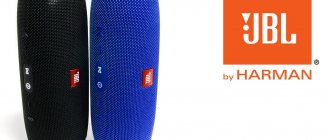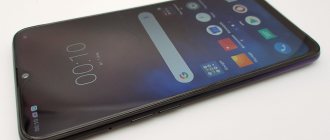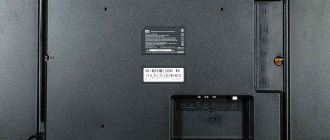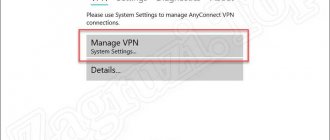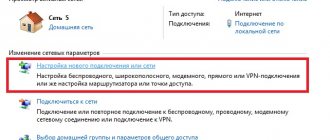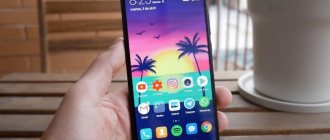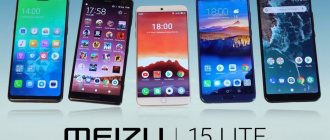The stylish LG Optimus L7 smartphone is the top of the L-Style line, which debuted in Barcelona at the Mobile World Congress 2012. A lot of time has passed since then, and now, a month after the start of sales of the youngest representative of L-Style - the LG Optimus L3 smartphone, it has arrived to us and flagship. Having captivated us with its appearance, display, and interface, it nevertheless left ambivalent impressions. You can find out what the smartphone lacked to win on all fronts from our review.
LG P705 Optimus L7 (Black) Smartphones and mobile phones on
Notify when on sale
Back in late 2011, Android smartphone manufacturers began to organize their devices into classes, groups, and lines. This is what Sony did with their NXT line, and HTC chose the same path, releasing three smartphones united under one word: HTC One. The situation is similar with Ascend from Huawei, and L-Style from LG. Almost all of the listed brands have a line that covers several price segments, ranging from 3,000 hryvnia to 6,000 hryvnia. Compared to them, LG smartphones are clearly out of trend. The younger model LG Optimus L3, which has earned the title of the most durable Android smartphone on the market from ITC.UA (we know about the Motorola Droid RAZR Maxx, but it’s too specific a model, and also CDMA), costs only 1,400 hryvnia. The older one will cost on average 1,700 hryvnia more. That is, the most expensive smartphone in the L-Style line costs about the same as the most affordable HTC One or Sony Xperia. Does this mean that LG has no one to compete with? Yes and no. For example, Optimus L7 will have to compete for a place in the sun with HTC One V, Sony Xperia U, Sony Xperia Sola, Acer Liquid Glow, Fly IQ285 Turbo and Samsung Galaxy Ace 2. As you can see, there are more than enough competitors and each has its own qualities . Since all of the listed smartphones have already been tested by us, and the Samsung Galaxy Ace 2 has just reached our editorial office, we can evaluate the prospects, as well as the strengths and weaknesses of the LG Optimus L7.
| LG P705 Optimus L7 (Black) Notify when on sale | HTC One V (Black) Notify when available | Sony Xperia Sola (Black) Notify when available | Sony Ericsson Xperia Arc S (Black) Notify when available | |
| Standard | GSM 850/900/1800/1900, UMTS 900/1900/2100 | GSM 850/900/1800/1900, WCDMA 850/900/2100 | GSM 850/900/1800/1900, UMTS 800/850/1900/2100 | GSM 850/900/1800/1900, UMTS 800/850/1900/2100 |
| High speed data transfer | GPRS, EDGE, HSDPA (up to 7.2 Mb/s) | GPRS, EDGE, HSDPA, HSUPA | GPRS, EDGE, HSDPA, HSUPA | GPRS, EDGE, HSDPA, HSUPA |
| Dimensions (mm) | 125.5x67x8.7 | 120,3×59,7×9,24 | 116x59x9.9 | 125x63x8.7 |
| Weight (g) | 122 | 115 | 107 | 117 |
| Processor (for smartphones) | Qualcomm MSM7227A, 1 GHz + Adreno 200 | Qualcomm MSM8255, 1 GHz + Adreno 205 | STE U8500, 1 GHz (dual core) + Mali-400MP | Qualcomm MSM8255T, 1.4 GHz + Adreno 205 |
| Memory | 512 MB RAM + 8 GB internal memory | RAM 512 MB + 4 GB internal memory | 512 MB RAM + 8 GB internal memory | 512 MB RAM + 1 GB internal memory |
| Expansion slot | microSD (up to 32 GB) | microSD (up to 32 GB) | microSD (up to 32 GB) | microSD (up to 32 GB) |
| Main screen | IPS, 4.3″, 480×800 pixels, 16.7 million colors, touch, capacitive, multi-touch support | Super LCD 2, 3.7″, 480×800 pixels, 16 million colors, touch, capacitive, multi-touch support | TFT (Mobile BRAVIA Engine), 3.7″, 480×854 pixels, 16.7 million colors, touch, capacitive, multi-touch support | TFT (Mobile BRAVIA Engine), 4.2″, 854×480 pixels, 16.7 million colors, touch, capacitive |
| Accumulator battery | Li-Ion, 1700 mAh | Li-Ion, 1500 mAh | Li-Ion, 1320 mAh | Li-Ion, 1500 mAh |
| Communications | USB 2.0 (micro-USB), Bluetooth 3.0+HS (A2DP), WiFi 802.11 a/b/g/n | USB 2.0 (micro-USB), Bluetooth 4.0 (A2DP), Wi-Fi 802.11 b/g/n (DLNA) | USB 2.0 (micro-USB), Bluetooth 2.1+EDR (A2DP), WiFi 802.11 b/g/n (DLNA), NFC | USB 2.0 (micro-USB), Bluetooth 2.1+EDR (A2DP), WiFi 802.11 b/g/n |
| Photography | 5 MP, auto focus, digital zoom, front VGA camera | 5 MP, auto focus, digital zoom, geotagging | 5 MP, auto focus, 16x digital zoom, face and smile detection, 3D Sweep Panorama, geotagging | 8.1 MP, auto focus, 2.46 x digital zoom, geotagging, 3D panoramic shooting function, face and smile detection in the frame |
| Video shooting | 640x480 pixels, up to 30 fps | 1280x720 pixels, up to 30 fps | 1280x720 pixels, up to 30 fps | 1280x720 pixels, up to 30 fps |
| Flash | LED | LED | LED | LED |
| operating system | Android 4.0 (ICS) + original LG interface | Android 4.0 (ICS) + HTC Sense 4.0 interface | Android 2.3 (Gingerbread), with subsequent update to Android 4.x | Android 2.3 (Gingerbread) |
| FM radio | Yes | Yes | yes (87.5-108 MHz, RDS support) | yes (87.5-108 MHz, RDS support) |
| Additional features | media player, video telephony, a-GPS receiver (Google Maps support), accelerometer, integration with social networks, light and proximity sensors | media player, Google services, position sensor (G-sensor), gyroscope, digital compass, media player, proximity sensor, light sensor, a-GPS module, HTC widgets, applications for accessing social networks (Facebook, Flickr, Twitter or YouTube ), SIM card type - microSIM | media player, a-GPS receiver, Google services, accelerometer, integration with social networks, Floating Touch function, work with office documents, light and proximity sensors | media player, GPS receiver (a-GPS support, Google Maps software), synchronization with Google services (Gmail, Search, Talk ect), accelerometer, integration with social networks, work with office documents, light and proximity sensors |
Dimensions. Contents of delivery
Unlike its counterparts, the LG Optimus L7 turned out to be very compact and lightweight, despite its 4.3-inch screen. The dimensions of the device are 125.5×67 mm with a thickness of 8.8 mm. Weight – 122 grams. It fits well in the hand and does not slip off. The back surface has a volumetric texture in the form of parallel stripes. This made it possible to improve ergonomics.
Optimus L7 can be carried in the pockets of tight clothing, in a shirt, jacket or bag without any problems. The device is thin!
- The scope of delivery includes:
- Phone LG P705 Optimus L7
- USB charger adapter
- Cable for synchronization with computer
- Instructions
It is worth noting that the kit does not include a headset. You'll have to buy it.
⇡#Options
LG Optimus L7 II Dual - factory box
The new product comes in a small bright cardboard box. The standard delivery kit for the device is far from the richest: inside we found only a 0.85 A charger, a microUSB ↔ USB cable and a short user manual.
LG Optimus L7 II Dual - equipment
Design, construction
LG L7 has a standard appearance for all modern touchscreens. Laconically smoothed corners of the rear panel are combined with corrugated surface. At the same time, the front panel is glossy and quite easily soiled. The body is entirely made of plastic.
The manufacturer positions Optimus L7 as an image product with a sophisticated appearance. But, to be honest, this fact is somehow not particularly obvious. Yes, the smartphone has a high-quality build, but the materials used do not correspond to the class. On the other hand, for a device costing 12,000 rubles, the design is quite adequate.
On the front there is a 4.3-inch touch screen. Above it are the speaker holes. You can also see a light sensor, an accelerometer and a front camera that can be used for video calls.
Under the screen there are two touch buttons: “back” and “context menu”, as well as a central menu button - it is mechanical.
The volume button is on the left side, the hole for a wired headset and the power and lock button are on the top side. The connector for the charger and also for connecting to a computer is at the bottom.
The back cover of the LG L7 is corrugated, with longitudinal stripes. The ends of the panel are smooth, but even there the plastic is matte, so fingerprints on it will not be noticeable.
At the back there is a 5 megapixel camera with LED flash. At the bottom is a speaker for external calls and audio playback. I would rate the sound in it as average. In most cases this will be sufficient.
Under the cover are slots for microSD and SIM cards. And although the latter is not hidden under the battery, to replace it you will have to remove the battery.
The smartphone is assembled at a factory in South Korea.
Review of LG Optimus L7II Dual
The second generation of LG smartphones from the L line entered the market quite a long time ago, but the updated L7 came to us only now. The first generation devices have proven themselves to be strong mid-rangers with the most successful implementation of support for two SIM cards. LG Optimus L7II Dual has absorbed all the best from its predecessors and has virtually doubled the performance. The most pleasant improvement was the battery capacity, now it is 2460 mAh, and the already outdated Qualcomm MSM7227 processor was replaced by the powerful MSM8625.
The best Telegram channel about technology (possibly)
Specifications:
- Housing materials: matte plastic (black or white)
- Operating system: Android 4.1.2
- Network: GSM/EDGE, UMTS/HSDPA, dual SIM support
- Processor: dual-core Qualcomm MSM8625, 1.0 GHz, Cortex-A5
- RAM: 768 MB
- Storage memory: 4 GB + microSD
- Screen: IPS, 4.3″, 800×480 pixels, capacitive
- Camera 8 MP, autofocus, LED flash + 0.3 MP (front)
- Additionally: Wi-Fi 802.11b/g/n, GPS, FM radio
- Battery: 2460 mAh
- Dimensions 122 x 66.6 x 9.7 mm
- Weight: 115 g
- Device price: 10,500 rub./2,300 UAH.
Equipment
The smartphone comes in a small, bright box with a short list of technical specifications on the side. The equipment included with the device is very modest: a date cable, a prefabricated charger and instructions. The lack of a standard headset is unlikely to make anyone very sad, because devices in the mid-price segment are equipped with very mediocre quality headsets that either gather dust in the closet or are immediately sent to the trash bin.
Appearance and ease of use
The entire L line lives up to its name, as all devices have a very sleek and stylish design. LG Optimus L7II Dual is slightly different from the single-SIM one in design; it has more rounded shapes. The device is sold in two colors - white and black, but it is worth noting that the white version has a corrugated back cover and, in general, is much more pleasant to the touch. In this model, the white color seems successful and attractive to me, perhaps this is a very subjective opinion distorted by the fact that a sample with a white body was sent for testing.
There was no place for noble materials in the design of the device; all components are made of plastic. The front part is covered with a scratch-resistant plastic coating, but it is still worth remembering that this is not Gorilla Glass.
Under the 4.3-inch screen there are 4 touch buttons: Back, Home, Menu and a button for switching SIM cards. The buttons have a mirror finish but, unfortunately, are not backlit. At the top there is a front camera, a proximity sensor and a speaker. The front panel is quite easily soiled, although readers are unlikely to be able to remember at least one device where this would not be the case, so this cannot be called a disadvantage.
On the right and left sides of the smartphone there are buttons for locking, volume control and camera shooting. However, none of the buttons have identification marks.
The headphone jack and microUSB port are located on the top and bottom edges, respectively.
On the back of the smartphone there is an 8 megapixel camera with flash and an external speaker. The lid latches are very convenient, and the recess for disconnecting it is located in the same place as the USB port, which is a very elegant design solution. The location of the SIM card slots is not very usual; they are located one under the other. The assembly of the device is sound, there are no creaks, no backlashes, or any gaps between the parts.
The LG Optimus L7II Dual fits very well in the hand, and the corrugated back cover makes it less slippery. Visually, the smartphone seems quite small and even looking at the 4.3-inch screen, you can’t call it a shovel.
Screen
LG Optimus L7II Dual is equipped with a 4.3-inch IPS display with a resolution of 480x800 pixels. The overall result is 217 dpi, which is, in principle, more suitable for a budget device, which the L7 II is not one of. The screen cannot be called faded, but it also cannot be called too juicy. At large viewing angles, the contrast of the picture drops noticeably, which is more reminiscent of TN matrices. There is no light sensor, which allows you to automatically adjust the brightness of the backlight, although now most even budget smartphone models are equipped with them.
Multi-touch works quite quickly and supports up to 10 simultaneous clicks. In addition, there is a software function “Smart Screen”, which uses the front camera to monitor your eyes and, if you look at the device, does not dim the display backlight. The function works without any complaints or false positives.
System
LG very often releases updates for its devices, and during testing the device managed to receive 2 minor updates. At the time of writing this review, the LG Optimus L7II Dual runs Android version 4.1.2. The launcher developed by LG, Optimus UI 3.0, is used as the shell.
A detailed story about all the differences in the shell would require a separate review, so I’ll briefly say that the shell is no less convenient than others and no fatal flaws were noticed. Optimus UI 3.0 works very quickly and without any stuttering.
A special feature in the shell is the ability to simultaneously watch a video and, for example, respond to SMS or email. It works as follows: when you press a special button, the video continues to play, but becomes translucent and you can control your smartphone. How necessary this feature really is is not very clear, but I have seen a lot of LG advertising banners on this topic.
The camera's shooting button can be configured to launch a specific application, which is quite convenient.
Performance
LG L7 II Dual is equipped with a dual-core Qualcomm MSM8625 processor with a clock frequency of 1.0 GHz, an Adreno 203 video accelerator, 768 MB of RAM, 4 GB of internal memory and a microSD memory card slot.
The problem with any LG smartphone is the non-standard table of mount points. Most games and programs treat the internal memory of the device as a memory card and, accordingly, load the cache and files into it. This creates a problem in the form of the inability to install games with a large cache. I was never able to launch Real Racing 3, GTA III, NFS: Most Wanted, because there is about 700 MB of free space in the internal memory, and the cache for these games weighs about 1.2 GB. The problem is, of course, solvable, but this requires obtaining Root rights, which leads to loss of warranty.
SHADOWGUN and DEAD Trigger were chosen from more or less difficult games. Both games worked at maximum settings, but sometimes an insufficient amount of FPS causes discomfort and slight stuttering of the game.
DEAD Trigger
SHADOWGUN
The benchmark testing results were as follows:
- AnTuTu Benchmark: 6636
- AnTuTu 3DRating: 1820/1091
- Quadrant Benchmark: 2753
- SQL Benchmark: 33.503 sec
- SunSpider JavaScript Benchmark (Chrome): 2167.1 ms
- NenaMark 2.4: 27.8 fps
- Epic Citadel, High Performance: 17.7 fps
Antutu Benchmark
Antutu 3D Rating and Quadrant Benchmark
SQL Benchmark and SunSpider
NenaMark 2
Epic Citadel, High Performance
Battery
Perhaps the most important advantage of the L7 II Dual is the battery; its capacity is 2460 mAh, which is one of the best indicators on the market.
The Treshbox.ru laboratory carried out special battery tests and in web browsing mode the smartphone was discharged in 11 hours 49 minutes, and in video viewing mode - in 10 hours 57 minutes. The manufacturer claims a talk time of up to 9 hours 30 minutes in third generation networks and up to 12 hours via regular GSM frequencies.
Looking at the above results, we see that a smartphone in active use mode can hold a battery charge for 2-2.5 days, and in regular dialer mode - about a week. At the moment, LG Optimus L7II Dual can be called the most “long-lasting” among all devices in the mid-price segment.
Camera
Like most modern smartphones, the LG Optimus L7II Dual is equipped with two cameras, a front 0.3 MP and a main 8 MP.
The front camera can only take pictures with a resolution of 640x480. The quality of the images can be assessed from the photos below.
The main camera has an 8 megapixel sensor and is capable of taking pictures with a resolution of 3264x2448 pixels. At first glance, the camera takes very good pictures, but in the photo of a white sheet of paper you can see a very uneven white color with a pinkish tint in the center of the exposure. In low light conditions, the sensor begins to make noticeable noise. The resulting photos can be quite ambiguous, sometimes they are really good, and sometimes they suffer from poor detail. Examples of the received photos can be seen below:
Photos with flash
The smartphone cannot shoot video in FullHD format and even 720p is too tough for it. Maximum video resolution when shooting: 720x480 pixels.
Communications and sensors
The smartphone supports all standard cellular networks: 2G GSM and 3G WCDMA. The receivers operate stably and no dropouts from the network or a noticeable decrease in the signal deviating from the norm were noticed. Working with two SIM cards is implemented at a very good level, and a button for quickly switching the main SIM card adds convenience.
The sensors here are: accelerometer, magnetometer, orientation sensor and proximity sensor. The GPS cold start took about 40 seconds. The maximum data transfer speed over Wi-Fi reaches 47 Mbit/s.
Bottom line
The LG Optimus L7II Dual smartphone is positioned as a device in the mid-price segment, but despite this, the body of the device does not receive any elite materials, and the screen is not protected by Gorilla Glass, in addition, the smartphone does not have the most powerful hardware, which is even more suitable devices in the budget segment. The lack of a light sensor and button illumination completely adds to the negativity. It is worth noting that the device also has its advantages. The main one is the virtually doubled battery capacity compared to any devices in the same price segment. Don’t forget about the very stylish design, which successfully combines a large screen and a modest-sized body. Considering all of the above, the price of the device seems certainly overpriced.
The price of the device, at the time of writing, is 10,500 rubles/2,300 UAH.
The device was provided by the official representative office of LG in Ukraine.
Screen. Graphics capabilities
Optimus L7 screen diagonal is 4.3 inches, resolution 480x800. By modern standards, the resolution for such a large display is low, but I don’t want to complain about pixelation. The image is quite smooth, the pixel boundaries are not noticeable and are only noticeable upon careful inspection.
The display is made using IPS technology, moderately bright and clear, it does not have poisonous colors. The viewing angles are large, which leaves a very positive impression. The display is protected by a layer of fiberglass.
When exposed to direct sunlight, the screen goes blind, but remains readable, although reflective glass and gloss try in every possible way to prevent this.
Keyboard and information input
Entering information, as well as writing texts and dialing numbers, occurs using a touch screen.
For typing texts, the LG L7 has two options: a vertical and horizontal QWERTY keyboard, as well as a telephone one. Changing the language occurs by pressing the “RU/EN” key, only you must first select the main languages in the settings.
Menu. Interface and navigation
LG Optimus L7 runs Android 4.0 Ice Cream Sandwich operating system. We tested a phone with kernel version 4.0.3. The software can be updated automatically. A proprietary custom shell, LG Optimus UI, is installed on top of the main operating system. This gives the smartphone unique features.
Unlike the standard OS, where the “Back”, “Home” and calling the last running programs buttons are built into the interface itself, in the LG Optimus L7 they are, in the old fashioned way, separated into separate buttons under the display. In some programs, another virtual key also appears, responsible for managing the context menu specific to this utility. At first you don't pay attention to it. You're looking for the context menu, but you can't find it. But over time, this logic is learned and the problems disappear.
The lock screen is implemented as standard. To unlock the device, you need to pull the circle with the lock depicted in it. When you touch the screen with your finger, two circles appear. The user's task is to move the smaller inner circle beyond the outer circle. At the same time, the background of the main desktop is visible inside the circle.
In the new version of Android, voice dialing has been improved. But you shouldn’t count on the appearance of an analogue of a virtual interlocutor, as is the case with Siri on the iPhone. Here, voice typing only concerns text input. Google has achieved synchronous voice processing; recognition now does not take place in “packets” of phrases, but is converted into text instantly, as it is spoken.
By the way, there are not many widgets; almost all of them migrated from the standard Ice Cream Sandwich.
Among the branded applications there is a notification manager for various events concerning the phone (for example, the availability of a new software version). The Remote Call program is a service for remote support and management of a smartphone, SmartWorld is an alternative catalog of applications, a weather informer, and a financial performance monitor.
conclusions
LG created probably one of the most controversial smartphones in my memory. A good screen and excellent battery life are on par with a slow processor and poor build quality. The future of the L7 definitely depends on the dynamics of its price, since at 3000 UAH at the start it will have serious competitors.
+ nice screen
+ excellent battery life
+ Android 4.0
- slow processor
- camera
- poor build quality
Telephone features
First of all, these include “Phone”, “Contacts”, “Messages”, “Call Log”. They are all located at the bottom of the LG Optimus L7 home screen in the bottom corner.
The Contacts application stores detailed information about phone numbers and subscribers. A specific record can have two dozen fields, be it last name, first name, patronymic, mobile number, home phone number, email address, date of birth or personal ID, Skype, etc. The search in contacts occurs immediately across all fields of the client, that is, you can dial the number, first name, last name, etc. Each subscriber’s profile can now be linked to his social media accounts.
During an incoming call, the screen displays a photo and number of the subscriber from the phone book, or, if the subscriber is unknown, a picture of a green man.
Text and multimedia messages are grouped by subscriber. By clicking on a specific contact, you can view the history of correspondence with this person.
Internet and Google services
The standard browser works very quickly thanks to the use of updated Webkit and JavaScript. In addition, the browser supports Adobe Flash and does everything a progressive browser should do.
The device is fully integrated with Google services such as Gmail, Picasa, Google Talk, Google Maps, YouTube and, of course, Google search. The user just has to provide his Google account information and that’s it.
Working tools include “Calendar”. It allows you to view events by date, time and action. The service is a high-quality planner-organizer, all in one. All events can be divided into groups with corresponding fields. All information may be stored on a Google server.
Multimedia capabilities
The “Music” item combines the classic music player of the Android 4 operating system.
In a standard player you can view and listen to audio tracks. The following file formats are supported: aac, .amr, .ogg, .m4a, .mid, .mp3, .wav, .wma (Windows Media Audio 9). There is sorting by artists, albums, genres, composers.
A unique thematic browser for photo and video files is the “Gallery” item. All files are divided into folders: photos and video clips, music.
⇡#Software
Lock screen | Main desktop |
The new product runs on the Android 4.1.2 Jelly Bean operating system with the Optimus UI 3.0 proprietary shell pre-installed. It is very similar to the standard “launcher”, repainted in other colors. We have already looked at the shell from LG in detail in the material about Optimus L9, so we will not repeat it. The firmware was well developed - no “bugs” were found during testing. It just slows down sometimes.
Pre-installed applications
In addition to all the standard “bucket” applications, the manufacturer also pre-installed third-party ones. There are not very many of them, but most of them are extremely useful. For example, the device has software for working with office documents, Polaris Viewer 4, and two dictionaries - DioDict and Quick Translator. Little things like a proprietary application store and an emergency assistance program were also discovered. It is noteworthy that if any of the pre-installed applications is not needed by the user, it can be deleted to free up memory. They are not sewn into the shell.
Camera. Photo and video capabilities
LG Optimus L7 has a 5 megapixel camera with autofocus. There is a flash. The following image resolutions are supported: 2560x1920, 2048x1536, 1280x960, 1280x768 pixels. Among the useful functions, it is worth noting the ability to select the focus point on the screen by touch.
Automatic contrast allows you to achieve decent image quality on a bright sunny day. Photos on the computer look quite adequate. Among the minuses, I note the absence of a camera button on the body of the device itself. If you need to take a photo of something very quickly, you will have to place the camera shortcut on the desktop.
The phone supports video recording in mpeg4 format for maximum resolution, and in the settings you can specify whether the video will be recorded with or without sound. All settings are comparable to those for photographs, but the video resolutions are different, plus effects are supported. The camera can shoot videos with a resolution of 1280x720, 800x480 pixels (30 frames), or a resolution of 640x480 pixels. Two additional resolutions - 320x240 and 176x144 pixels. The recorded video is not bad.
Photos and videos can be viewed from the Gallery menu. Photos and videos are displayed as thumbnails, the list opens very quickly, there are no delays even with a large number of photos or images.
Design, ergonomics
LG Optimus L7 is a logical upward evolution of Optimus Black (its downward evolution is L5). But there is a new design solution here. It seems that the Koreans’ collaboration with PRADA was not in vain, and now all their smartphones miraculously resemble the fashionable style of the Italian brand. Moreover, the matter is not limited only to the L-Style line. LG itself states that this is now their new signature design. Well, it looks better than before. But materials are still almost entirely limited to plastic. True, we must pay tribute to LG, the plastic of the case is matte, which means it is not so easily soiled. Due to this, the smartphone is more practical and will definitely not get scratched quickly.
The L7 fits perfectly in the hand and is assembled with high quality. The back cover presses a little and creaks when pressed, but these are minor things. The side frame, unlike the same Optimus 4X HD, is not metal, but plastic. But on the back there is a small metal insert (a typical LG technique, starting with the Optimus 2X) around the camera. In addition, the button was made metal - like PRADA 3.0. As I wrote, the case is thin (8.8 mm) and has a relief texture on the back. The model is initially available in two colors, and this is a big plus. In my opinion, the L7 in a white case looks no worse (and for some, better) than in a black case.
There are few controls in the Optimus L7. There is a microUSB port on the bottom, a power button and a 3.5 mm audio jack on top, and a volume rocker on the left. On the front panel under the screen there is a central mechanical key, on the right is a touch menu button, on the left is return. As you can see, everything is standard. LG is also traditional in terms of SIM cards; there is a full-size compartment. And also with an expansion slot, there is the usual microSD (supports media up to 32 GB, there is a “hot” swap). At the back is a camera module with flash (top) and speaker (bottom). Front facing camera.
Let's compare the dimensions of the LG Optimus L7 with the Samsung Galaxy S II:
Memory and speed
Optimus L7 is powered by Qualcomm MSM7227A chipset with 1-core gigahertz. In addition, the device has 512 megabytes of RAM and 4 gigabytes of flash memory, as well as the ability to install a microSD memory card up to 32 gigabytes.
Of course, the L7 is far from the flagships, and sometimes the device can be, let’s say, thoughtful. This can be seen from the rare slowdowns in the menu and when working with the browser. But when watching a video this happens much more often. The smartphone cannot adequately display files in Full HD format, which, however, is excusable for a screen with a resolution of 480x800 pixels.
Communication capabilities
In addition to the standard connection to a computer via microUSB, the LG L7 supports Bluetooth 3.0. Bluetooth provides wireless connection to peripheral devices: for example, A2DP/AVRCP stereo headsets.
When connected to a USB port, there are several connection options: Media, Charge only, Storage, LG Sync. In Storage mode, the device is picked up perfectly without additional drivers, and you can copy the necessary data.
Returning to communication capabilities, it is worth noting support for packet data transmission in 3G networks (HSPA). The phone can be used as a modem, which provides an incoming traffic speed of 14.4 Mbit/s.
Optimus L7 supports Wi-Fi 802.11 b/g/n standard.
Results
The LG Optimus L7 smartphone turned out to be very entertaining. It boasts a good screen, a modern operating system and a long battery life. However, the performance for heavy applications is not enough. The smartphone may freeze periodically.
Among the competitors, which include Sony Xperia sola, to some extent iPhone 3GS, HTC One V, the new product does not look so bright.
Advantages
- Latest version of Android 4.0 operating system
- Large IPS screen
- High quality build
- Balanced price
Flaws
- Low speaker volume
- Not the most powerful filling
On the day of publication, LG Optimus L7 could be purchased at a price of 12,500 rubles.
Testing apparatus provided.
Specifications
The smartphone is powered by a dual-core Snapdragon Qualcomm MSM8225 processor, clocked at 1 GHz, Cortex A5. This is in every way better than MSM 7227a. In synthetic tests, the smartphone shows average results, but we didn’t count on records. Graphics accelerator Adreno 203. With this hardware, the main functions of the smartphone are performed normally (not reactive), but with games like Dead Trigger you will have to endure or not play at all. The smartphone thinks about it here and there, even responds to the control keys after a few seconds. In a word, it’s not a gaming smartphone. However, you can miss a couple of birds between calls. 768 MB of RAM is enough, considering that you won’t be playing on the L7 II. You can count on full multitasking if you work mainly with Evernote, mail, Twitter and similar applications. But, if you open 5-8 tabs in the browser, applications in the background close. 4 GB of built-in memory is again sufficient, given the ability to expand it using a memory card. This is all good, nothing can be called a compromise, but the main advantage of the smartphone and its advantage over the first “seven” is the battery. From 1700 mAh the capacity has increased to a fantastic 2460 mAh. A year and a half ago, we looked at such a battery in the Galaxy Note and couldn’t believe our eyes, but here the display is smaller, and in general the device is less demanding. This is a serious bid for leadership in the class, even I will give preference to autonomy over much else, and those who need constant communication on two SIM cards will definitely appreciate the autonomy. We can safely talk about a whole day of very active work with a smartphone, with Twitter, mail, calls and birds.
Specifications LG Optimus L7 II Dual
- Dimensions: 121.5 x 66.6 x 9.7 mm.
- Operating system: Android 4.1.2 JB.
- Processor: dual-core, Snapdragon Qualcomm MSM8225, 1 GHz.
- Graphics : Adreno 203.
- Display: IPS, 4.3″, 480 × 800.
- Memory: 4 GB flash expandable (Micro SD up to 32 GB)
- RAM: 768 MB.
- Camera: main - 8 MP, video recording at 720 p, front - 0.3 MP.
- Wireless technologies: Wi-Fi, Bluetooth 4.0.
- Interface connectors: 3.5 mm headphone jack, micro USB (OTG support).
- Battery: Li-Pol battery 2460 mAh.

